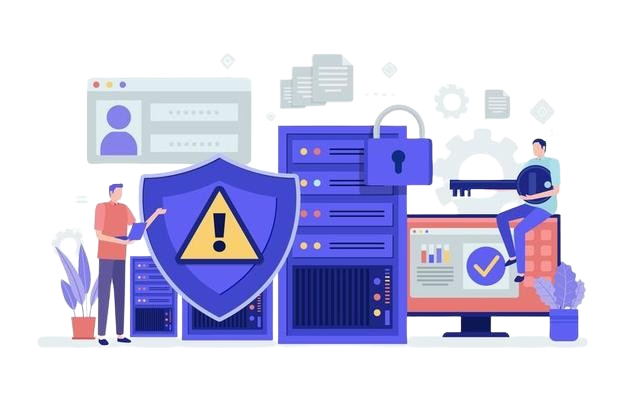What is Network Security?
Network security is a fundamental aspect of modern computing environments, ensuring the integrity, confidentiality, and availability of data across networked systems. With the rapid evolution of technologies such as cloud computing, Internet of Things (IoT), and big data, organizations face increasingly sophisticated threats. The importance of network security cannot be overstated, as it forms the backbone of safeguarding sensitive information, critical infrastructure, and digital assets from unauthorized access, attacks, and exploitation.

Understanding Network Security
In an increasingly digitized world, the importance of safeguarding our digital assets has never been more paramount. Network security is at the forefront of safeguarding sensitive data, preventing unauthorized access, and maintaining the integrity and availability of systems. As enterprises and individuals alike continue to rely heavily on interconnected systems, a robust understanding of network security practices and principles is essential.
Definition and Importance of Network Security

Network security encompasses the strategies, technologies, and protocols employed to protect data and networks from various types of threats and vulnerabilities. These threats can originate from both external sources, such as hackers and cybercriminals, and internal sources, like disgruntled employees or inadvertent security lapses. The main goals of network security are:
- Confidentiality: Ensuring that sensitive information is only accessible to authorized users.
- Integrity: Safeguarding data from unauthorized modification or tampering.
- Availability: Guaranteeing that data and network resources are available to authorized users when needed.
As businesses become more dependent on digital operations, they are vulnerable to a growing spectrum of cyber threats, including malware, ransomware, denial of service (DoS) attacks, phishing, and advanced persistent threats (APT). Inadequate network security measures can lead to financial losses, legal ramifications, reputational damage, and disruptions to operations.
Key Components of Network Security
Network security comprises a multifaceted approach with various layers of defense to mitigate risks. Below are the critical components:
Firewalls
Firewalls are the cornerstone of network security, acting as a barrier between an internal network and external networks. They monitor incoming and outgoing traffic and enforce security rules to allow or block data packets based on predetermined security policies. Firewalls can be either hardware or software-based and are essential for preventing unauthorized access while allowing legitimate communication.
Intrusion Detection and Prevention Systems (IDPS)
Intrusion detection systems (IDS) and intrusion prevention systems (IPS) are designed to monitor network traffic for suspicious activities or policy violations. An IDS alerts administrators of potential threats, while an IPS takes proactive measures to block or mitigate these threats. Together, they provide a critical layer of defense against internal and external threats.
Virtual Private Networks (VPNs)
VPNs provide secure remote access to networks by encrypting traffic between the user’s device and the network. This is especially important for employees who access company resources from remote locations, ensuring that sensitive information remains secure over public or unsecured networks.
Encryption
Encryption is a vital method of protecting data by converting it into an unreadable format for unauthorized users. It is used to secure data both in transit and at rest, safeguarding confidential information from interception or unauthorized access. Strong encryption protocols, such as AES (Advanced Encryption Standard), ensure that only authorized users with the correct decryption keys can access the original data.
Authentication and Access Control
Proper user authentication mechanisms ensure that only authorized individuals can access network resources. Multifactor authentication (MFA) adds an additional layer of security by requiring users to provide multiple forms of verification, such as a password and a one-time code sent to their mobile device. Access control policies further limit what resources authenticated users can access based on their roles and privileges within an organization.
Antivirus and Antimalware Solutions
Antivirus and antimalware software protect networked systems from malicious software, including viruses, worms, trojans, and ransomware. These programs continuously scan for known threats and suspicious behavior, helping prevent malware from compromising the network.
Types of Network Security Threats
Malware
Malicious software designed to damage, disrupt, or gain unauthorized access to a network or system. This category includes viruses, worms, ransomware, spyware, and trojans.
Phishing
An attack in which cybercriminals attempt to deceive individuals into providing sensitive information such as login credentials or credit card details, often through fraudulent emails or websites.
Insider Threats
Not all network threats come from external sources. Insider threats involve employees, contractors, or third parties who have legitimate access to the network but abuse their privileges to steal or sabotage data.
Best Practices for Network Security
Organizations can bolster their network security by implementing best practices that encompass technology, processes, and education. Some key best practices include:
Regular Security Audits and Assessments: Conduct routine security assessments to identify vulnerabilities and ensure that security policies and tools are functioning correctly. Penetration testing can simulate attacks to evaluate the network’s defenses.
Employee Training and Awareness: Human error remains one of the most significant security risks. Regular training programs can educate employees on recognizing phishing attempts, avoiding unsafe practices, and following proper security protocols.
Patch Management: Regularly updating software, operating systems, and security tools is crucial to addressing known vulnerabilities. Unpatched systems are a frequent target for cyber attackers.
Data Backup and Disaster Recovery: Regular data backups and a robust disaster recovery plan ensure that critical information can be restored quickly in the event of an attack or other disaster. This helps mitigate the damage caused by ransomware and other threats.
Speak With Expert Engineers.
Contact us by filling in your details, and we’ll get back to you within 24 hours with more information on our next steps

Please fill out the contact form

Call Us
United Kingdom: +44 20 4574 9617

UK Offices
Business Address: 70 White Lion Street, London, N1 9PP
Registered Address: 251 Gray's Inn Road, London, WC1X 8QT
Schedule Appointment
We here to help you 24/7 with experts

